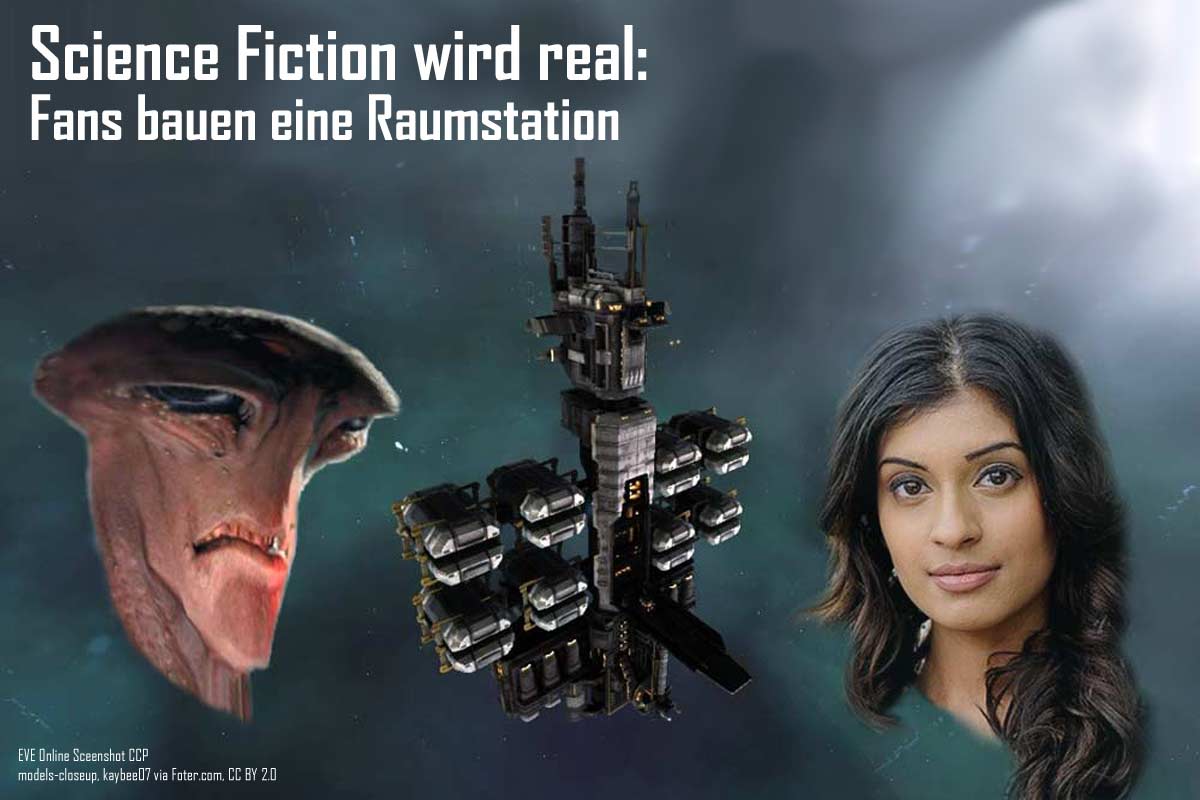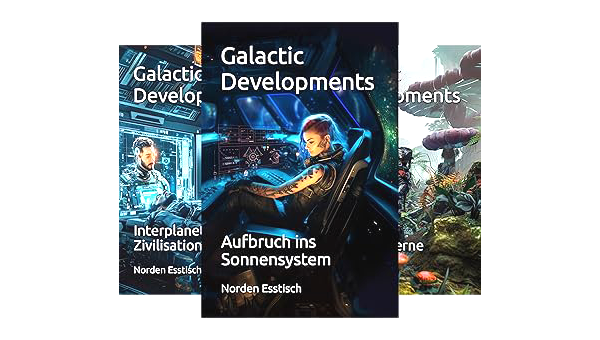
2165 Yksityiskohta World Jam

Erste globale Zusammenkunft der Yksityis-Bewegung, genannt "YZero Con"
Der V-Con ist eine virtuelle Zusammenkunft von Yksityis-Anhängern. Die Veranstaltung wird jährliche abgehalten mit stark wachsenden Teilnehmerzahlen. 2165 sind es 20.000 Teilnehmer. Dann fünf Jahre später schon eine Million. Weitere zehn Jahre später um 2180 stößt der V-Con trotz virtueller Präsenz mit weltweit 20 Millionen Teilnehmern an organisatorische Grenzen.
Yksityiskohta (auch Yksityis oder Eeqsitis) ist der Glaube an den Einzelnen, an das Individuum und an das Entstehen des Gemeinwohls aus vielen Beiträgen von selbständigen Individuen. Der Glaube an das Jetzt und an den Lohn durch Arbeit, bzw. Lohn von der Natur durch Sorge für die Natur.
Entstanden ist Yksityis in Nordeuropa während des Crashs. Die Länder Nordeuropas gehörten Mitte des 21. Jahrhunderts zu den am höchsten entwickelten Gebieten der Erde. Sie waren deshalb besonders stark vom Ausfall der Technik betroffen; und vom harten nördlichen Klima, das plötzlich wieder eine zentrale Rolle spielte. Als große Organisationen, einschließlich der Kirchen, nicht helfen konnten, konzentrierten sich die Menschen auf sich selbst und ihre eigenen Fähigkeiten.
Damit verstärkte sich im Norden Europas ein seit der Jahrtausendwende wachsender Trend zur Abwendung von den organisierten Religionen. Viele Menschen finden in Yksityis eine neue spirituelle Heimat, die zu ihrer neuen Lebenswirklichkeit besser passt als die Buchreligionen. Wichtige Elemente sind Selbstregulierung (Homöostase) und Selbstorganisation in lernfähigen Systemen. Es gibt Einflüsse der Gaia-Hypothese, von Naturreligionen, Shintoismus (Diesseitsbezogenheit, Kami in allen Dingen) und – bei besonders engagierten Gläubigen – dem Schamanismus.
Die Dynamik geht von der Basis aus und nicht von Organisationen oder Vordenkern. Nach den schmerzhaften Erfahrungen des Crashs hat der Glaube an Autoritäten gelitten. Viele Gemeinschaften mussten sich selbst helfen. Sie waren dabei in den ersten Jahren auf das angewiesen, was die Natur ihnen bot. Der Begriff Natur, der Mitte des 21. Jahrhunderts zum Synonym für bedrohte Umwelt geworden war, änderte sich wieder zur Lebensspenderin (Gaia, Muttererde).
Der westliche Trend zur Individualisierung und zur individuellen Freiheit bekam neuen Raum als die Durchsetzungsfähigkeit von Staaten abnahm. Auf der organisatorischen Ebene bedeutet Yksityis Dezentralisierung und Subsidiarität, mit der Betonung von Selbstbestimmung und Eigenverantwortung. Darin drücken sich Verhaltensweisen aus, mit der eine ganze Generation aufgewachsen ist, als Probleme selbst oder in kleinen Gruppen gelöst werden mussten. Der Ansatz führt auch zur Ablehnung von Fremdsteuerung und Kontrolle, sowohl staatlicher als auch gesellschaftlicher und religiöser Organisationen.
Der subsidiäre Aspekt von Yksityis findet sich auch in Eter-Technologien wieder, die ganz stark von nordeuropäischen Konzernen geprägt werden.
2168 Fans bauen eine Raumstation

Fans der beliebten Sci-Fi Abenteuer Serie Spaceship Udyama kaufen eine alte Raumstation und bauen sie zu einem 1:1 Modell des berühmten Bibliothekskreuzers um.
Spaceship Udyama spielt in einer fernen Zukunft, in der die Menschen einen Teil der Galaxie besiedelt und große Imperien gegründet haben. Es gibt außerirdische Völker, von denen einige mächtige Reiche beherrschen. Die Erde ist fast vergessen. Sie ist ein Museumsplanet ohne machtpolitische Bedeutung. Die Udyama ist ein sogenannter Bibliothekskreuzer. Sie ist eine mobile Bibliothek, in der das Wissen der Menschheit gesammelt wird, um es allen Besuchern des Solsystems zur Verfügung zu stellen. Zu diesem Zweck ist die Udyama in der ganzen Galaxie unterwegs und wird in viele Abenteuer hineingezogen.
Captain Rani Kapoor und viele andere wichtige Figuren der Serie sind immer wieder an der Lösung von Problemen zwischen Völkern beteiligt. Einige kreative Lösungsansätze führen später jedoch zu unerwarteten und fatalen Folgen. Manche Entscheidungen des Captains und anderer Schlüsselfiguren sind eher von Realpolitik geleitet als von idealisierten Moralvorstellungen. Überraschende Wendungen mit dramatischen Konsequenzen für Protagonisten oder Völker sind charakteristisch für die Serie.
Spaceship Udyama hat eine sehr engagierte Fangemeinde. Die Serie ist in den 30er Jahren des 22. Jahrhunderts ein Medienphänomen. Die erste Staffel läuft als wöchentliche Fortsetzungsgeschichte. Sie erzählt die Abenteuer des Bibliothekskreuzers und seiner Besatzung. Die Serie wird von Jamina Svapna/Mumbai (JSM) produziert. Aufgrund des großen Erfolgs wird die Serie sofort zweitverwertet auf allen großen Netzwerken. Danach fährt der Produzent einen Vario-Ansatz mit schnellen Formatwechseln.
Die zweite Staffel Udyama Dina (Udyama Day) läuft als tägliche Sendung, die das normale Leben der Besatzung abseits von großen Abenteuern darstellt. Danach folgt Udyama Asimita (Udyama Unlimited) als interaktives Slink, eine der ersten großen Slink (Sensory Link) Produktionen. Die Serie verhilft der Slink-Technik in den 30er Jahren zum Durchbruch.
In der nächsten Phase, ab 2135, kommt mit Udyama Paripreksya (Udyama Perspective) ein neues Format, das die Ereignisse parallel aus der Sicht mehrerer Beteiligter zeigt, darunter auch Außerirdische. Udyama Paripreksya führt die Zuschauer so intensiv in die Sichtweise einiger Außerirdischer ein, dass sich viele Zuschauer mit einzelnen Figuren und Völkern identifizieren.
Mit Udyama Jala (Mesh of Udyama) ab 2140 bekommen einige der außerirdischen Protagonisten eigene Ableger. Die Handlung der Ableger bildet ein Geflecht dessen Fäden sich immer wieder kreuzen. Alle Ableger haben eingeschworene Fangemeinden. Viele Fans nehmen in ihrem realen Leben die Überzeugungen der Serienhelden und ihrer Völker an. Manche gestalten ihre Physiologie entsprechend um. Udyama wird in dieser Zeit zum Mainstream. Im Netz entsteht eine riesige Menge von zusätzlichem Material, vieles davon als Franchise autorisiert vom Produzenten, aber noch mehr als Fan-Fiction.
Während Udyama Jala ausläuft, beginnt War of Udyama (2145), eine Phase, in der bewaffnete Konflikte dominieren. War of Udyama wird wieder als Multi-Stream aus der Perspektive der verschiedenen Völker gezeigt. Die tägliche Sendung Udyama Dina, ebenfalls im Multi-Stream, befasst sich in dieser Zeit mit Kriegsfolgen für die Normalbevölkerung. War of Udyama radikalisiert einige Fans bis in das reale Leben. 2151 wird das ursprüngliche Konzept der Abenteuer des Bibliothekskreuzers wiederaufgenommen. Die Besatzung der Udyama ist wesentlich daran beteiligt, dass in der Haupthandlung Frieden einkehrt.
Trivia: der europäische Ratspräsident schwört bei seiner Vereidigung 2158 auf den Warschauer Vertrag und auf die Uppruna, das Grundgesetz der Wajanen, einem der herausragenden Alien Völker des Udyama Universums.
Ab 2154 beginnt die Planung für das Udyama 5 Projekt. Der Name des Projekts beruht auf der Zählung der Modelle des Bibliothekskreuzers in der Serie. Die aktuelle Version ist 3. Die beiden Vorgänger sind jeweils unter dramatischen Umständen verloren gegangen. In War of Udyama taucht an einer Stelle die "legendäre" Version 5 auf. Der Produzent von Udyama unterstützt das Projekt, obwohl viele Elemente einfließen, die zwar zum Community-Kanon gehören, aber nicht offiziell sanktioniert sind. Tatsächlich ist Fan-Fiction nach dem Udyama Community-Kanon sehr diszipliniert und kollidiert selten mit dem offiziellen Hintergrund.
Das Projekt erwirbt eine 30 Jahre alte orbitale Fabrik von Industrias Benavides. Der Kauf wird finanziert von Björn Hlynur Gustafsson, dem Gründer von Norware, einem Eter-Giganten. Gustafsson ist selbst Fan der Serie und des dazugehörigen Universums. Er hatte vorher schon diverse Fan-Fiction Projekte unterstützt. Die Kosten für den Umbau werden von der Fangemeinde finanziert. Ein großer Teil des Aufwands wird von mehreren orbitalen Konstruktionsfirmen getragen, die die Kosten als Marketingausgaben verbuchen.
Die umgebaute Station gleicht der Udyama 5 äußerlich. Sie hat Zonen für verschiedene Völker, wie im Original der Serie. Die Station hat Platz für 50 permanente Bewohner und 120 Gäste. In den verschiedenen Zonen leben Fans, die sich dem Reenactment verschrieben haben. Fast alle mit Modifikationen, die ihr Äußeres an das ihres jeweiligen Aliens Volks anpassen. Auch viele Verhaltensweisen werden im realen Leben bis ins Detail nachgebildet. Dazu gehört das Matriarchat der Moputsoa, chemisch hervorgerufene Schizophrenie bei K’hoja-Schamanen und die Namenssuche der Rotna-Wajanen.
Mehr Kultur
2078 Neueste Forschung
2090 Adaptive Zusammenfassung
2115 Neuroimplantate
2128 Kinder Gen-Baukasten
2165 Yksityiskohta World Jam
2168 Spaceship Udyama
2231 Vereinte Planeten
2234 Am Ende des Orbits
2326 Kein interplanetarer Krieg
2343 0G-Spiele
2369 Mabesi-Krise
2445 Scum-Festival
2625 Alien-Tiere kommen zu uns
2664 Die Geschichte der Galaxis
2693 Reisen unter fremden Sonnen
2721 Spacedom-Tragödie
2750 VR-Drama Executive Decision
3050 Königliche Garde
3090 Solo Ehre
3131 Roboter und Drachen
3300 Begriffsveränderung
3353 Tor der Kontroverse
Neue Beiträge
2158 Space Patrol
2222 Weltraumpiraten
2326 Kein interplanetarer Krieg
3050 Königliche Garde
3090 Solo Ehre
2234 Am Ende des Orbits
2248 Gemini-Katastrophe
2366 Orbitale Ökonomie
2312 Kaio-Artefakt
3361 Erste Menschheit
2333 Metrische Impulsverstärkung
2337 Verschwörung im Orbit
2247 Quantensprung
2284 Trennung der Erde
2321 Isolation der Erde
2205 Unternehmensnationen
2192 Antiexpansionistischer Terror
2179 Private Asteroidenbasis
2231 Vereinte Planeten
2291 Verbotene Forschung
Die Besten
(20 von 75)
2231 Vereinte Planeten
2326 Kein interplanetarer Krieg
2445 Scum-Festival
2478 Razzia im Asteroidengürtel
2501 Extraplanetare Forschung
2540 Mukhagni-Zwischenfall
2544 Nachricht des Jahrhunderts
2560 Fakultät für Exotechnologie
2720 Spacedom-Tragödie
2725 Auch Maschinen haben ein Gewissen
2746 Medizinischer Durchbruch
2786 Nette Aliens
2794 Prophet der galaktischen Händler
2806 Weltraum Müll
3010 Wiederbesiedlung Kisors
3042 Galaxien
3110 Zersplitterung des äußeren Systems
3116 Shackleton-Aufstand
3245 Sterge-Blockade
3340 Strategische Initiative
 2162
Nano-Wars
2162
Nano-Wars

 2170
Riesenpilze denken langsam
2170
Riesenpilze denken langsam